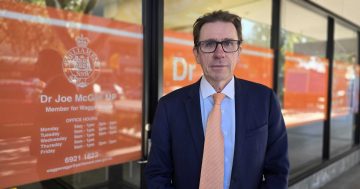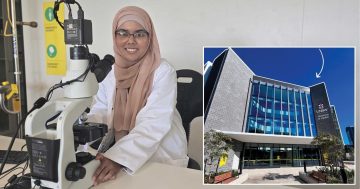
Rural generalists are GPs who provide primary care services, emergency medicine and have training in additional skills like obstetrics, anaesthetics and mental health services. Photo: File.
“We’ve got a problem across the board that requires numbers,” says Dr Paul Mara AM, a general practitioner (GP) who’s served as a rural doctor for 40 years and inspired the single employer model (SEM) being trialled across the country.
One of the founding executive members and president of the Rural Doctors Association in NSW, along with its national body – Dr Mara has been involved in medical politics for decades. While he still resides and works in Gundagai, he’s moving towards retirement and just sold his practice to a couple of the younger doctors coming through.
After watching his practice struggle to retain staff for years, Dr Mara cleverly used government funding to develop a unique training model that better coordinated a pathway for GPs to work in rural communities.
“Increasingly now, a lot of that stuff is being done by fly-in fly-out doctors, locums and doctors that have been working there as solo practitioners,” said Dr Mara. “But they’re getting burned out and not able to do the full gab of that service.
“What’s happening is that doctors are saying to small country towns, ‘I’ll come and work in your place if you pay me a lot of money, give me a LandCruiser and three-bedroom house’. So communities are competing with each other to provide stuff for doctors.”
Rural communities require 24/7 comprehensive healthcare services, including GPs and hospital settings that can deliver emergency medicine and procedures. To meet that capacity, Dr Mara said you really had to break the nexus between the Commonwealth and state, particularly during the training.
Currently GPs are funded by the Commonwealth through Medicare, while the states fund and oversee hospitals. This seemingly trivial disconnect has led GPs away from establishing their roots in rural communities, leaving practices unable to provide services people in the country need.
SEM handles it by allowing trainees to seamlessly transition between hospital and private GP-based work under one employee, as they train to be a rural practitioner.
“Effectively what it involves is a six-year training program,” said Dr Mara. “The first two in a hospital setting and optimally some work in a small rural community, then a guaranteed four-year period on the job training program.”

“The model isn’t about doctors and even training,” said Dr Mara. “It’s about how we can best provide the services that people in the country need.” Photo: Quality Practice Accreditation.
After two to three years the idea was accepted at the federal level, but hit a major roadblock when the Commonwealth said they wouldn’t fund Medicare for doctors working under a state employment arrangement like the SEM.
Dr Mara said this decision that limited the initial Murrumbidgee trial to five trainees – “is just nonsense” – and reveals policymakers’ failure to understand rural healthcare.
“They don’t have to bring their kid to a hospital at two o’clock in the morning to be told that there’s no doctor and they can’t be seen, so they have to drive two hours to go to Wagga or Griffith,” said Dr Mara. “That’s the fundamental reason it’s treated as a project and not a crisis.
“We could have had an extra 20 doctors in the Murrumbidgee scheme, if we hadn’t had that restriction put on. And as soon as they say it’s a trial or pilot, that doesn’t give confidence to people who might want to become rural doctors that this is going to be a reliable and valid option.”
While Dr Mara acknowledges the program’s success in organisational terms, he believes various groups are hampering policy by seeing it in purely industrial terms, as the issue becomes more acute. Not because of population growth, but because doctors are pulling out of the system.
Dr Mara said SEM had the potential to not only address the disconnect between the state and Commonwealth health systems – but redefine how Australia paid doctors to work in both areas.
The current workforce strategy requires doctors to work for two years in a hospital setting before they do their advanced training as a specialist. Dr Mara wants to extend that period to a third year, where the trainees have an opportunity to do well supported training in small rural towns across the country.
He said it would put between 1800 to 3600 extra doctors in the bush each year, almost solving the workforce situation overnight.
“There would be virtually no need for locums, and we might even get people that really enjoyed the experience who want to stay on and continue to work in a rural environment,” said Dr Mara. “That’s a major shift in thinking, but it’s not out of the ballpark.”
Original Article published by James Day on PS News.










